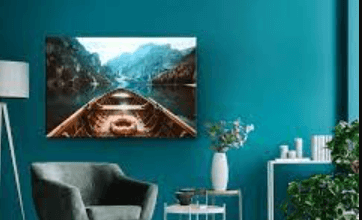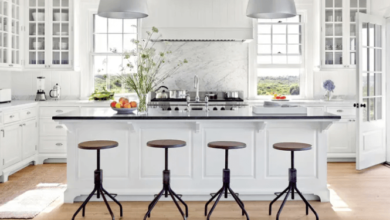The Rise of Modern Dado Rails: Integrating Classic Architectural Elements into Today’s Homes

The trajectory from Victorian opulence to minimalist modernism is a narrative that houses the essence of architectural evolution. Along this arc, certain elements have transcended time, holding steadfast while others have been relegated to the chapters of history. The dado rail is one such feature – a bridge between tradition and contemporaneity, it presents an intriguing opportunity for homeowners and designers to infuse a space with the charm of yesteryears without compromising on the aesthetic vision of the present. In this post, we’ll explore the resurgence of dodo rail in modern interior design and how they contribute to the timeless elegance of today’s homes.
Understanding the Dado Rail
Before we can appreciate the modern adaptation of dado rails, it’s crucial to understand their origin and purpose. Dado, derived from the Italian word for “dice” or “cubes,” referred to a decorative panel that spanned the lower part of a wall. In the Victorian era, dado rails were often utilitarian, serving to protect the wall from furniture and wear. However, as architecture moved towards the ornate, dado rails became a decorative boundary, allowing for distinct wall treatments – wallpaper, wainscot, or bare walls – to coexist harmoniously.
A Revival of Classic Elegance
The past few years have witnessed a resurgence of interest in classical architectural elements, driven by a desire to cultivate a sense of history and comfort in the home. Dado rails are an emblem of this movement, with modern homes increasingly adopting them to create a ‘new traditional’ aesthetic. The versatility of dado rails is one of their key attractions; they can be painted in contrast to the wall, serving as a visual break and highlighting the potential for multiple wall treatments. This flexibility allows for a play on texture and color that echoes the bespoke design of the Victorian era, albeit adapted to contemporary tastes.
Modern Dado Rails in Practice
Integrating dado rails into a modern home is both an art and a science. The key lies in creating a seamless integration of an old-world feature with present-day design ethos. Homeowners and designers are making bold choices with dado rails, eschewing the traditional wood-toned finish for crisp whites, deep charcoals, or even metallic accents. The height placement of the dado rail has also evolved; while the classic placement is around 32 inches from the floor, modern interpretations often vary to as much as 48 inches, catering to the scale and proportions of today’s buildings.
The Fusion of Old and New
One of the quintessential characteristics of incorporating dado rails into modern spaces is the fusion of old and new. When used alongside contemporary fixtures and furnishings, dado rails add an unexpected layer of complexity to the design. They invite a dialogue between eras, each complementing and enhancing the other. Coupled with strategic lighting and modern artwork, dado rails can transform a room, elevating its character without feeling anachronistic.
Read also Discreetly Accessing Instagram Highlights Without Revealing Yourself
Designing with Dado Rails
To harmonize dado rails within a modern context, it’s essential to consider the bigger picture. They are not standalone design features, but part of a cohesive aesthetic. Thoughtful color choices, material selection, and the overall design scheme play crucial roles in making dado rails appear intentional rather than an out-of-place historical relic. Blending classic architectural elements with contemporary comfort is a practice in balance – a task that requires a keen eye for detail and a commitment to the artistry of interior design.
The Future of Dado Rails
As the design world continues to redefine what constitutes the modern home, dado rails offer a unique proposition. Their timeless charm and adaptability ensure they will remain a fixture in the design lexicon for years to come. With a new generation of homeowners looking to create spaces that honor the past while celebrating the present, dado rails are set to play a pivotal role in shaping the interior landscapes of the future.
In conclusion, the integration of dado rails into modern homes is more than a mere nod to history – it’s a celebration of architectural continuity and the enduring allure of classic design. For those looking to add depth and character to their living spaces, a well-appointed dado rail might just be the perfect starting point in creating a home that is a testament to good design across the ages.




